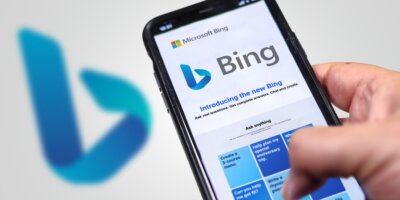
Google CEO Sundar Pichai speaks during the Google I/O keynote session at Shoreline Amphitheatre in Mountain View, California, on May 10, 2023. (Photo by Josh Edelson / AFP)
Google I/O 2023: Can AI-powered Search Labs match up to Microsoft’s Bing?
|
Getting your Trinity Audio player ready... |
- Google unveiled a new version of its search engine that uses large language models and AI tools to answer users’ queries conversationally.
- The experimental space dubbed ‘Search Labs’ allows access to users that signed up on the waitlist.
- Not all Search Labs features will graduate to the leading search engine.
Google has just concluded its annual I/O developers conference on May 10, and as expected, its latest obsession, generative AI, took center stage. After months of being under pressure to reinvent its core search business amidst the rise of artificial intelligence programs that can generate content, Google finally unveiled ‘Search Labs.’
Simply put, Search Labs is a version of its search engine that uses large language models and AI tools trained on enormous volumes of text to answer users’ queries conversationally. During his presentation, Sundar Pichai, Google’s chief executive, said the new experimental space allows users who sign up for a waitlist to access it.
For now, the search feature will initially only be available in the US, though, and Google said it would then look to roll out the feature more widely in the coming months. Pichai also emphasized that certain features may eventually graduate to the leading search engine while others will be scrapped entirely.
For context, Google has been racing to catch up with Microsoft on consumer AI products since December last year, shortly after Microsoft’s investment into OpenAI. Threats to Google’s long-held search engine dominance deepened when Microsoft partnered with OpenAI to relaunch Bing in February.
A month later, OpenAI revealed its language model, GPT-4, which users can access through a premium version of ChatGPT and via Bing. Amidst all that, Alphabet, in April, merged its DeepMind and Google Brain AI research units to accelerate AI development.
The large language model, AI tools by Google
The AI-driven search feature, as well as updates to its Bard chatbot and products such as Gmail and Google Docs, are powered by the company’s large language AI model, PaLM 2, which was also launched on Wednesday. PaLM 2 is also a competitor to rival systems like OpenAI’s GPT-4.
“PaLM 2 models are stronger in logic and reasoning, thanks to broad training in logic and reasoning,” Pichai said onstage. “It’s also trained on multilingual texts spanning over 100 languages.”
Google senior research director Slav Petrov also told journalists in a roundtable before the model’s announcement that PaLM 2 is much better at a range of text-based tasks, including reasoning, coding, and translation.
“It is significantly improved compared to PaLM 1 [which was announced in April 2022],” said Petrov. In a research paper describing PaLM 2’s capabilities, Google’s engineers claimed the system’s language proficiency is “sufficient to teach that language.” They noted this is partly due to a greater prevalence of non-English texts in its training data.
So far, Within Google’s domain, PaLM 2 is already being used to power 25 features and products, including Bard, the company’s experimental chatbot. Updates available through Bard include improved coding capabilities and more excellent language support. It also powers features in Google Workspace apps like Docs, Slides, and Sheets.
Can Google catch up with Microsoft?
Frankly, Google was an AI juggernaut until its recent stumbles, especially it’s botched unveiling of its Bard chatbot and slow rollout of generative AI capabilities across its various products. That has left the tech giant playing catchup to arch-rival Microsoft.
However, with an estimated 93% of the worldwide search market, Google has more to lose. A report by Bloomberg quoted Prabhakar Raghavan, a senior vice president at Google, who shared in an interview ahead of the conference that the company is trying to be thoughtful about how to set expectations with users about the capabilities of generative AI.
“One of the defining questions for me is, how do you delineate what these things can and cannot do in a way that’s understandable to users, to businesses? Or to the ecosystem at large?” Raghavan said, according to Bloomberg.
READ MORE
- Safer Automation: How Sophic and Firmus Succeeded in Malaysia with MDEC’s Support
- Privilege granted, not gained: Intelligent authorization for enhanced infrastructure productivity
- Low-Code produces the Proof-of-Possibilities
- New Wearables Enable Staff to Work Faster and Safer
- Experts weigh in on Oracle’s departure from adland


